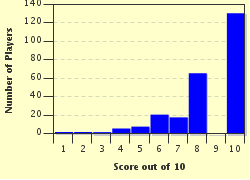Quiz Answer Key and Fun Facts
1. Anchors teeth to the jawbone
2. The frontmost tooth
3. Hardest part of the human body
4. Tissue that lies around teeth and jawbones
5. Four of these are known as wisdom teeth
6. Sometimes called the eye tooth
7. Raised point on a tooth
8. Forms the bulk of all teeth
9. Transitional tooth that usually has two cusps
10. Contains nerves and blood vessels
Source: Author
nautilator
This quiz was reviewed by FunTrivia editor
rossian before going online.
Any errors found in FunTrivia content are routinely corrected through our feedback system.


